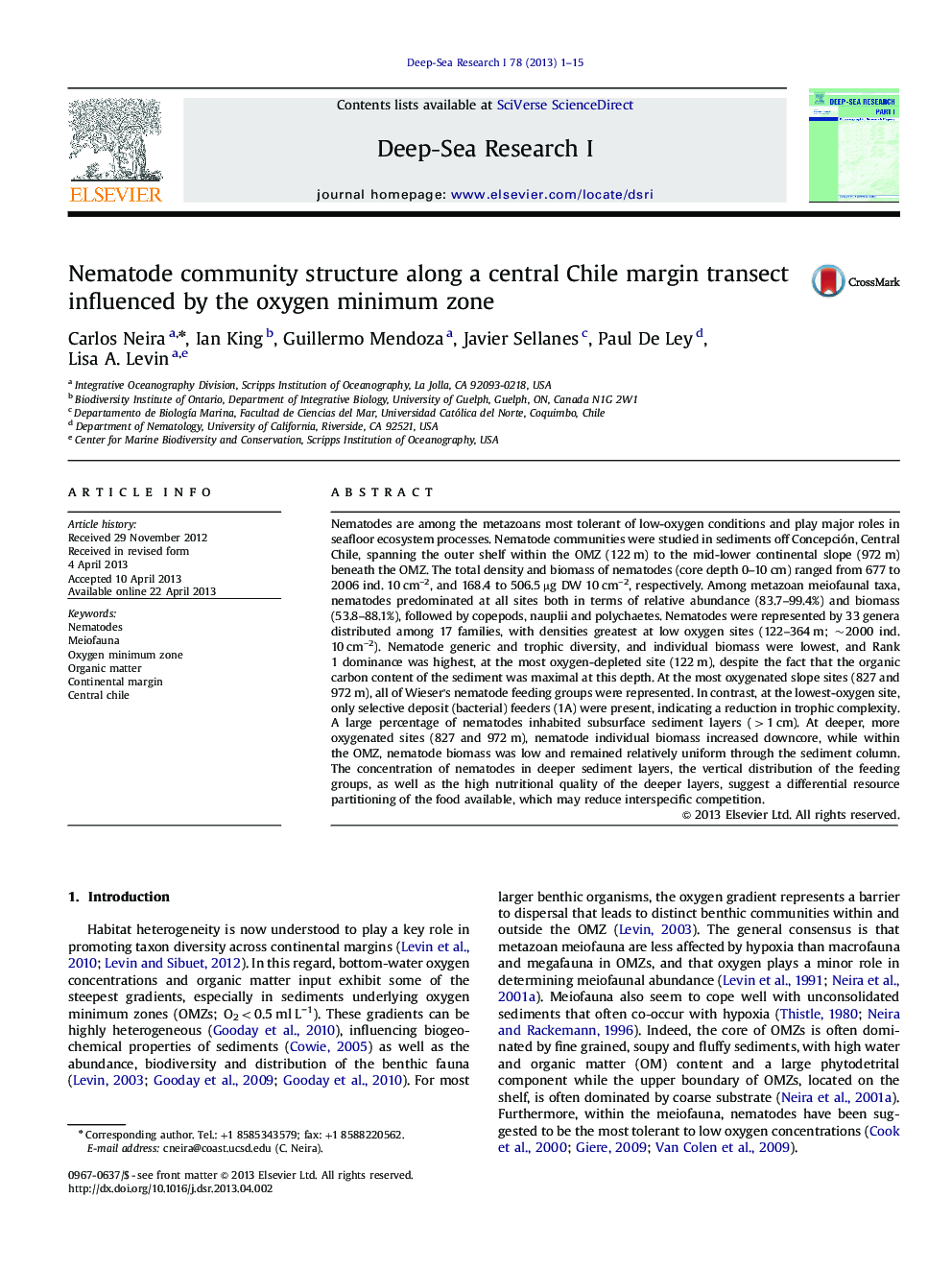| کد مقاله | کد نشریه | سال انتشار | مقاله انگلیسی | نسخه تمام متن |
|---|---|---|---|---|
| 6383799 | 1626352 | 2013 | 15 صفحه PDF | دانلود رایگان |
- Nematode communities were studied across the central Chile margin OMZ.
- OMZ nematodes exhibit lowest generic and trophic diversity, and individual biomass.
- Quality of organic matter influences nematode diversity and community structure.
- Results suggest key ecosystem functions may be lost as OMZs expand.
Nematodes are among the metazoans most tolerant of low-oxygen conditions and play major roles in seafloor ecosystem processes. Nematode communities were studied in sediments off Concepción, Central Chile, spanning the outer shelf within the OMZ (122 m) to the mid-lower continental slope (972 m) beneath the OMZ. The total density and biomass of nematodes (core depth 0-10 cm) ranged from 677 to 2006 ind. 10 cmâ2, and 168.4 to 506.5 µg DW 10 cmâ2, respectively. Among metazoan meiofaunal taxa, nematodes predominated at all sites both in terms of relative abundance (83.7-99.4%) and biomass (53.8-88.1%), followed by copepods, nauplii and polychaetes. Nematodes were represented by 33 genera distributed among 17 families, with densities greatest at low oxygen sites (122-364 m; ~2000 ind. 10 cmâ2). Nematode generic and trophic diversity, and individual biomass were lowest, and Rank 1 dominance was highest, at the most oxygen-depleted site (122 m), despite the fact that the organic carbon content of the sediment was maximal at this depth. At the most oxygenated slope sites (827 and 972 m), all of Wieser's nematode feeding groups were represented. In contrast, at the lowest-oxygen site, only selective deposit (bacterial) feeders (1A) were present, indicating a reduction in trophic complexity. A large percentage of nematodes inhabited subsurface sediment layers (>1 cm). At deeper, more oxygenated sites (827 and 972 m), nematode individual biomass increased downcore, while within the OMZ, nematode biomass was low and remained relatively uniform through the sediment column. The concentration of nematodes in deeper sediment layers, the vertical distribution of the feeding groups, as well as the high nutritional quality of the deeper layers, suggest a differential resource partitioning of the food available, which may reduce interspecific competition.
Journal: Deep Sea Research Part I: Oceanographic Research Papers - Volume 78, August 2013, Pages 1-15
